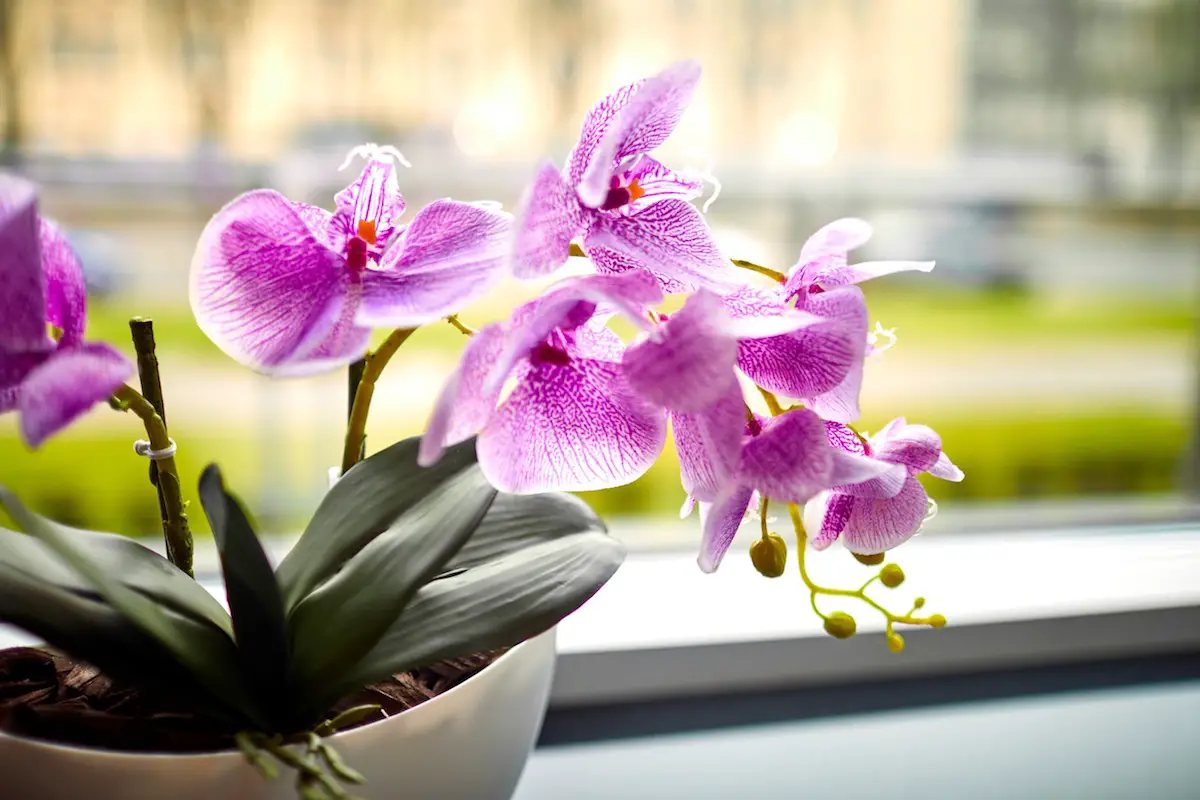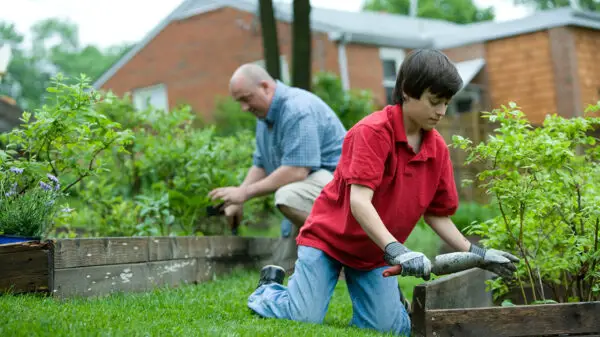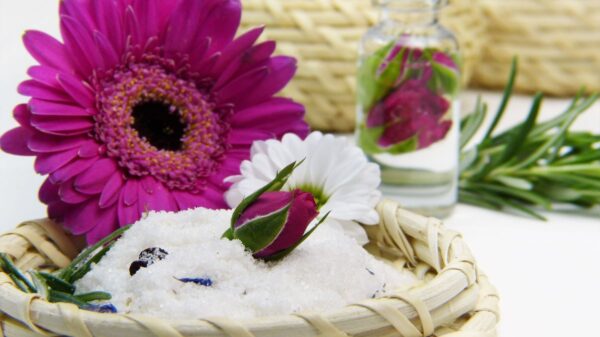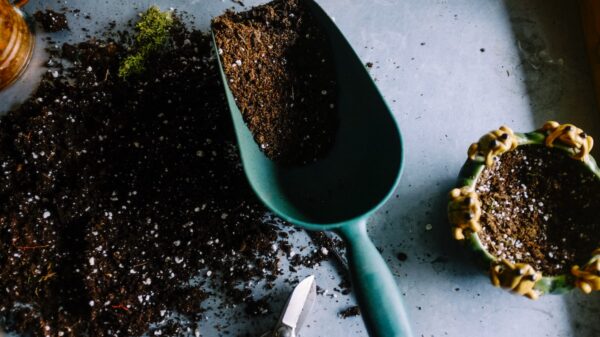How to Repot an Orchid
Repotting is an important part of taking care of plants. While it sounds simple enough, some plants such as orchids have very specific needs that you need to account for when you’re repotting them. So, how do you repot an orchid?
You repot an orchid by gently loosening any tangled roots, removing any packing moss, and then replanting it in an orchid pot with orchid soil. Finish by watering the orchid and gently tying a support stake to the plant to help support its current or future blooms.
While it’s a relatively simple process, there are some tips and tricks to repotting an orchid that will help you set up your plant for a happy, healthy life.
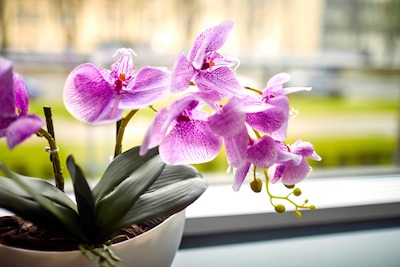
The Steps for Repotting an Orchid
When you buy an orchid, it’s a good idea to re-pot it so that it has the best chance possible to thrive.
Step 1: Supplies
To repot an orchid, you’ll first need to get all the necessary supplies. These include an orchid pot (or a pot with extra drainage holes), fresh orchid potting mix, and some kind of stake for support.
Step 2: Take Out of Pot
Once you’ve gathered your supplies, start by taking your orchid out of its current pot. Gently loosen up any roots that may be tangled in the soil; this will help them spread out better when placed in new soil.
Step 3: Remove Roots
When you buy an orchid, there will probably be moss packed around its roots. This is to make sure the roots don’t dry out during transport, but you shouldn’t leave it in permanently, or the roots will rot. So, make sure to remove all of this from the roots before repotting.
Step 4: Place Orchid in Pot
Next, fill the new pot about halfway with fresh orchid potting mix and lightly water it until evenly damp. Then, place your orchid in the middle of the soil and spread its roots as evenly as possible to fill out the pot. Add more of the orchid mix to cover up the roots, lightly tapping it down with your fingers to secure the plant.
Step 5: Add Extra Support
Finally, if your orchid’s flower spike or stem is at least six inches long, place a stake up against it for additional support. Use orchid clips or plastic twist ties to attach the stake to the spike, and add more as the spike grows. This will give your plant the support it needs to keep its blooms upright.
Step 6: Maintenance
Once you have finished repotting your orchid, it’s important to water it thoroughly and gently, making sure it has a chance to drain fully. Then, let the plant rest in indirect sunlight as it settles into its new home. Don’t be alarmed if your orchid doesn’t grow for a little while after you repot it – it’s a big change for a plant and will take some getting used to. After a few days or weeks, though, your orchid should be good to go.
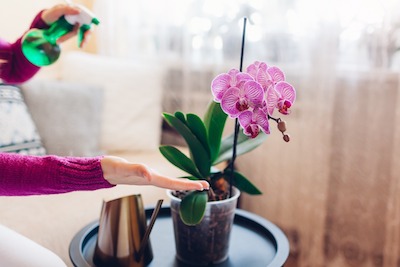
An Orchid’s Ideal Growing Conditions
Environment
Orchids are tropical plants that like to live in warm and humid environments. Orchids also love the shade, but they do need some sunlight, so make sure your plant gets at least some indirect light every day, and keep the temperature above 65 degrees Fahrenheit for optimal growth.
Water
While your orchid needs regular watering, it probably needs less than you think it does. Every orchid is different, but usually watering it every 7 to 10 days is a reasonable estimate. Test the soil with your finger — if it’s wet, don’t water it, and if it’s damp, wait one more day.
When you do water your orchid, put it in your sink and run lukewarm water over its soil for about 15 seconds or until the soil is thoroughly wet. Then, leave it in the sink to drain for about 15 minutes. This will help you ensure it’s getting the moisture it needs without drowning it.
Place the drained pot on a tray filled with gravel and water, making sure that the bottom of the pot isn’t touching the water. This will help increase humidity and air circulation without rotting the orchid’s roots.
Soil
As far as soil goes, orchids need a mix that drains well and provides them with plenty of airflows. Commercial orchid potting mixes are usually the best, but you can also make your own from bark chips and sphagnum moss.
Pots
A pot with lots of holes for airflow is also important for healthy orchids. Buy a pot specifically designed for orchids, if you can. While plastic pots work well enough, terra cotta or clay pots are even better, as the clay allows the soil and roots inside it to breathe, further preventing your orchid from getting too much moisture.
When choosing a pot size, make sure it’s big enough for the roots to spread out comfortably but not so big that they can’t get the airflow they need. A pot that’s too large can lead to root rot, which is a common problem with orchids.
Pest Control
Finally, pests like aphids and mealybugs can be a real problem for orchids. If you find any on your plant, use a toothpick to wipe away the bugs from the leaves and stems with some alcohol. Also, make sure to keep an eye out for fungus gnats, which are small black flies that tend to hover around the soil in orchid pots. To get rid of them, use a special insecticidal soil drench that you can find at any local garden store.
Fertilizer
Like any other plant, orchids need a bit of fertilizer to stay healthy. A water-soluble, balanced 20-20-20 fertilizer is usually best for orchids and should be used once every two weeks during the growing season (usually spring through fall). Avoid using fertilizers when your orchid isn’t actively growing, as this can burn the roots and make your plant sick.
In Closing
With the proper care and some love, your orchid should be thriving in no time. If you have any doubts about what will work best for your particular plant, don’t hesitate to reach out to a local nursery or an orchid expert for advice.
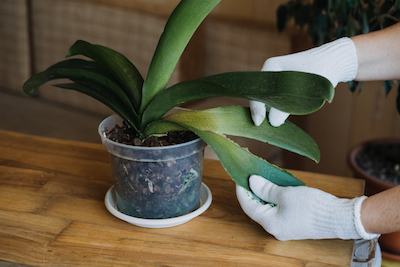
Related Questions
How often do orchids bloom?
Most orchids bloom once a year, during the spring. A few varieties will rebloom throughout the year, but this is rare and usually requires specific growing conditions. If you are looking for an easy-to-care-for orchid that blooms often, consider getting a phalaenopsis or moth orchid. You can encourage your orchid to continue blooming by making sure it has enough light and water, as well as fertilizing it every two weeks with an organic fertilizer specifically designed for orchids.
Are orchids easy to grow?
Orchids can be relatively easy to care for, but they require specific growing conditions to stay healthy. They need indirect light and consistent watering, but too much water can cause root rot. To help prevent this, you have to make sure the pot has plenty of drainage holes and is the right size for your orchid’s roots. Finally, orchids need a special type of well-draining soil and fertilizer to stay healthy and reach their full potential. With these conditions, orchids can be relatively easy to grow.
Are orchids expensive?
Orchids can be expensive, depending on the variety. Some orchids can cost as little as $10 and some rare species can cost hundreds of dollars. However, with proper care and attention, orchids can last for years and make an excellent way to make a house look appealing.


